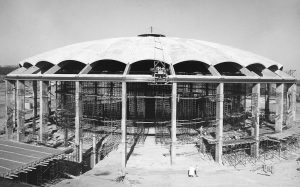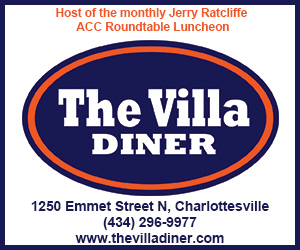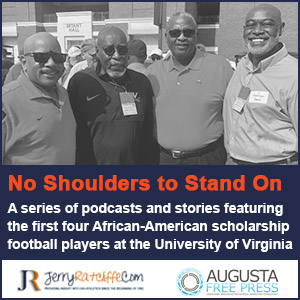University Hall Facts And Figures
By Jerry Ratcliffe

Construction of University Hall (Photo courtesy baskervill.com).
Over the next few days, we will feature several stories about Virginia’s legendary basketball arena, University Hall.
We will talk to players and coaches about their favorite memories in the building, which was dedicated on Nov. 21, 1965, and is scheduled for implosion this coming Saturday morning at 10 o’clock. I will also put together a column of my favorite memories in covering Virginia basketball there from 1982 until the final game there in 2006.
I actually have a video that I made of the last game at UHall, all the hoopla surrounding the game before tipoff, during the game, and the ceremony afterward. Don’t really know what to do with it, but it’s a nice keepsake.
Here are some nuggets about UHall that perhaps you didn’t know:
# Cost of University Hall was approximately $4 million.
# The Cavaliers’ last win in UHall’s predecessor gymnasium, Memorial Gym, was a 69-67 victory over Clemson in February of 1965.
# UVA christened the new arena, UHall, in November of ‘65 with a lopsided, 99-73 loss to Adolph Rupp’s Kentucky Wildcats. That same Kentucky team, which featured Louie Campier and Pat Riley, would go on to lose the national championship to the all-African American lineup of Texas Western at Maryland’s Cole Field House later that season.
# Dampier was the first player to score a basket in UHall. The 8,000 fans that showed up for the game was the largest basketball crowd in Charlottesville history at that point.
# After the opening of the arena, The Supremes with Diana Ross, and Lovin’ Spoonful performed at UHall, the first of many concerts in the building over the years.
# The Virginia General Assembly appropriated $2,367,692 toward the construction of UHall, something that the state no longer would consider. The remainder of funds for the arena were provided by revenue bonds to be retired and student fees.
# Original configurations of the building called for 9,486 seats for meetings and convocations, 8,466 for basketball, and 2,969 for concerts.
# There is 5,000 tons of concrete in the building’s clamshell roof.
# UVA players used to refer to the building as “the pregnant clam.”
# Virginia built the new arena in a bit of an arms race back in the mid-60s, and was to rival arenas at Maryland and NC State, along with a planned new field house at North Carolina.
# When UHall was built, Mem Gym seated 3,500 and was built in 1923 when UVA’s enrollment was 1,200 students.
# At the time of UHall’s opening, scheduled events for the following spring included the London Symphony Orchestra and a performance of the opera LaBoheme by Puccini. The building featured a large, 48-foot wide fiberglass concert shell used for musical performances. The arena also had a giant movie screen and projection system that could be lowered into place.
# A modern, four-sided scoreboard was installed so fans could receive instant game statistics.
# While Rupp’s Wildcats were the first game in the building, the first actual event was eight days earlier, a concert by the Czech Philharmonic Orchestra.
# The design firm was Baskerville and Son of Richmond in consultation with Anderson, Beckwith and Haible of Boston.
# UHall featured 14 locker rooms, a huge upgrade from Mem Gym, which had only three.
# In addition to UHall, the project included The Cage, a 160 x 140-foot square structure for indoor practices for various sports teams.
# The Cavaliers finished last in the ACC from 1960 to 1964 in basketball, while playing the final years in Mem Gym.
# Shorty after its completion, the Seven Society’s distinctive insignia mysteriously appeared atop the building.
# On highly-sought after national high school prospect Ralph Sampson’s visit to UVA, the words “Ralph’s House,” mysteriously appeared on the roof of UHall, which Sampson said was one of his favorite memories from his days as a Cavalier.
# George Herbert Walker Bush made a UHall appearance for the Education Summit in September 1989. It was notable for the fact that the chairman of the Association was none other than Bill Clinton, and so Bush and Clinton appeared together as co-sponsors of the Summit (according to Dr. Larry J. Sabato, director of UVA’s Center for Politics). Of course, they didn’t know they’d be running against each other in 1992, but there is a certain irony there.








